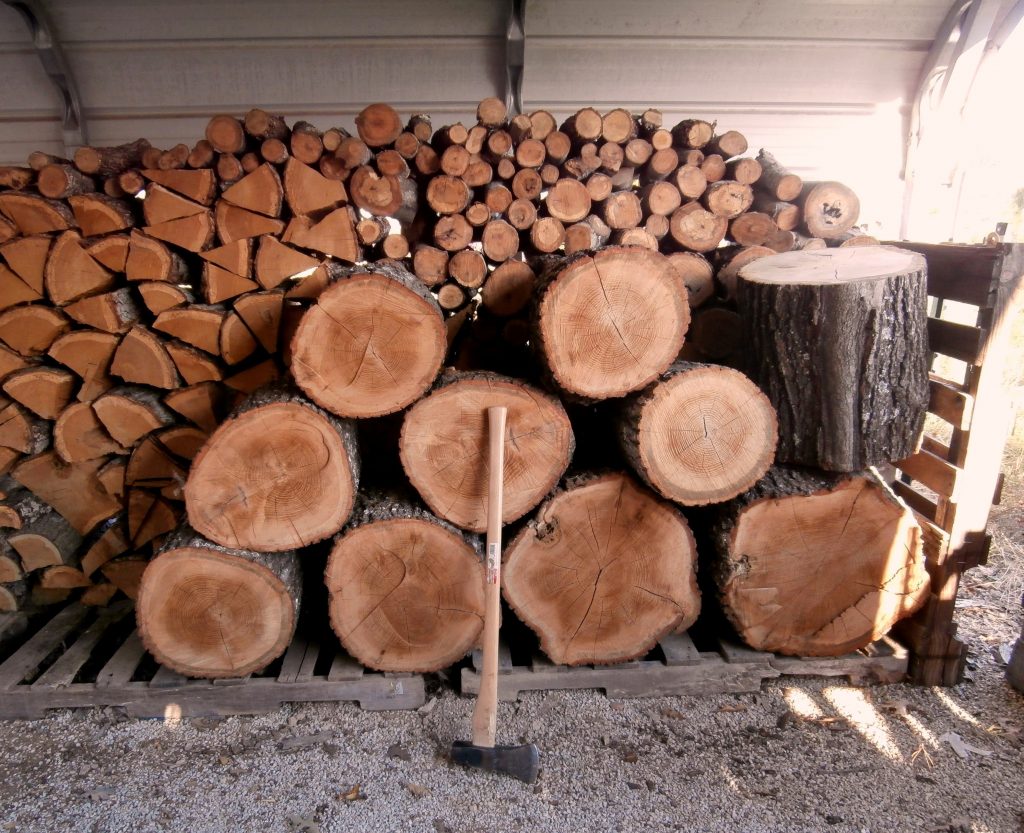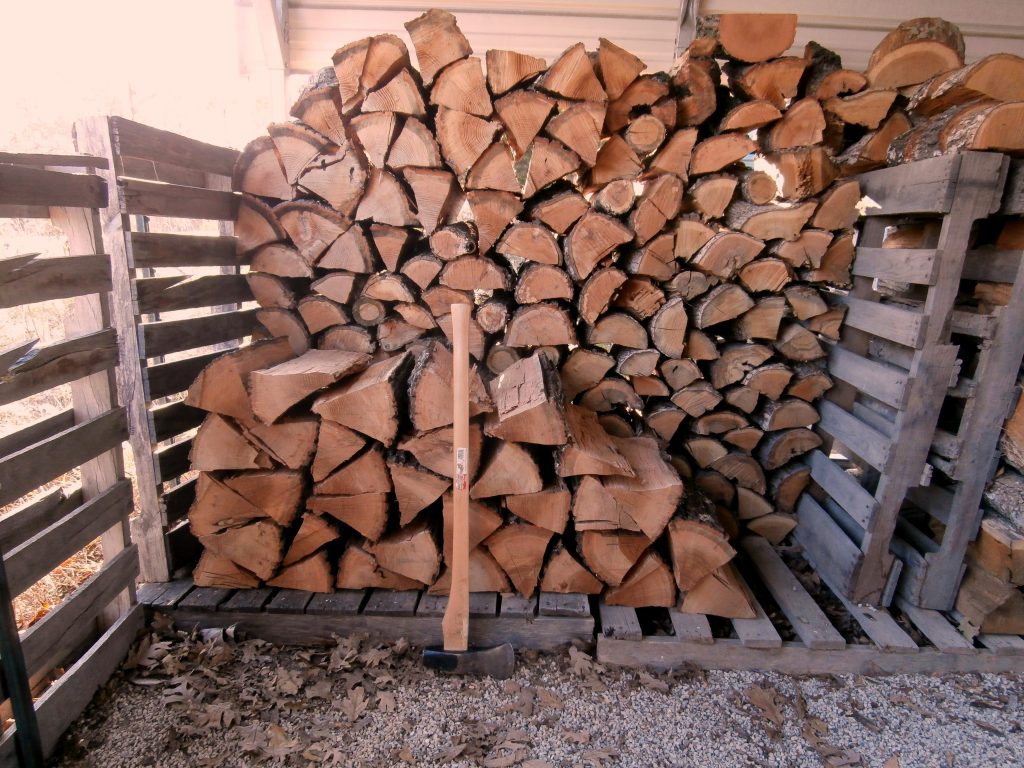Actually ‘splitting wood’ more accurately describes what I do each winter in order to maintain a two year supply of cured firewood for my woodstove. [All photos ![]() Max Vollmer, Click on any photo to enlarge. ]
Max Vollmer, Click on any photo to enlarge. ]

A year ago I felled a red oak tree on my property that had succumbed to a pest locally referred to as the ‘green ash borer.’ The base of the tree was a little over 24 inches in diameter and I cut the bolts (log sections) into approx. 24 inch lengths to fit my cast iron, airtight stove from Ireland. I let these bolts sit all summer to begin to dry and then in the Fall I split them into sections left to dry another year. I fell trees and split firewood when the days are cold to avoid breaking a sweat. Temperatures in the low to mid-40’s Fahrenheit are perfect for splitting, while temperatures in the mid-30’s are better for felling and bucking.

I’ve been splitting firewood since I was 11 or 12 years old. As a kid I used a Plumb ax to split wood for the family fireplace. For the last 40 years I’ve been using a maul which is much more efficient! Currently I am using an 8 lb. maul which is needed for these large oak rounds. When I bought my current property it came with a gas-powered log splitter that I used for one season. It was fast, but I sold it because I prefer to split the wood by hand. It’s naturally much harder work by hand, but it is part of what keeps me in shape at 73. Through the years of using a heavy maul, I’ve learned how to put biomechanics to work for me. I’ve perfected something like a full overhead, figure-8 swing that employs gravity, momentum, a pendulum motion, and centripetal force to do the work. My arms and arm muscles don’t really do the work of splitting, so much as they direct the mechanical motion and application of force (mass x acceleration = force) that does.
